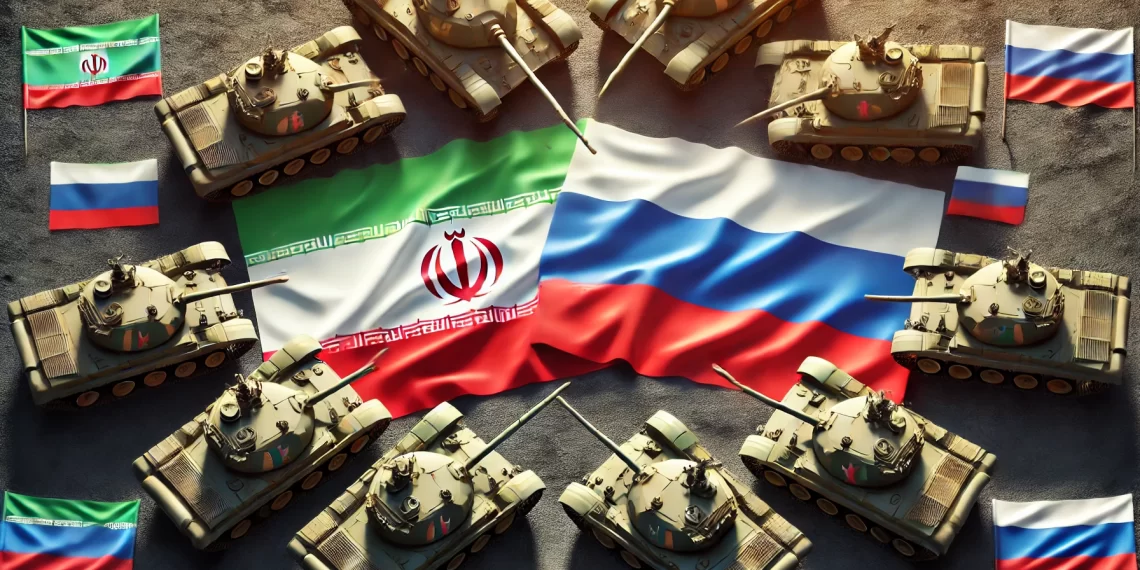On April 2, 2024, Ukraine’s military executed a targeted strike on several buildings in Russia’s Alabuga Special Economic Zone in Tatarstan. This action demonstrated Ukraine’s advancing capability to target deep inside Russian territory, but also underscored the substantial progress in Iranian-Russian defense cooperation since 2022. Russia has localized the production of Iranian-designed Shahed drones at Alabuga, a degree of cooperation with Tehran that was unimaginable a few years ago. These drones, along with other Iranian-origin systems, have created significant challenges for Ukraine, prompting this strategic response.
From the 1990s to 2022, Russia’s military assistance to Iran included tanks, armored vehicles, anti-tank missiles, combat aircraft, helicopters, and surface-to-air missiles, among others. This assistance primarily focused on hardware rather than technology transfers. Russia also provided support to Iran’s nuclear program and unofficially transferred technology to Iran’s ballistic missile and suspected chemical and biological weapons programs.
Since 2022, the dynamics have shifted significantly. Iran has emerged as a crucial enabler of Russia’s air and ground campaigns in Ukraine, transforming the defense relationship from a patron-client dynamic to a partnership of strategic significance. The collaboration has expanded into new areas, including the joint development of uncrewed aerial vehicles (UAVs). Both nations have moved to institutionalize their defense ties, formalizing mechanisms to facilitate and coordinate military-technical cooperation.
Western policymakers must face the reality that even if the war in Ukraine ends, the Iran-Russia defense relationship is unlikely to revert to its pre-2022 status. Both countries have identified mutual military needs that they can help each other meet. Traditional measures like diplomatic pressure or sanctions may have limited effectiveness as long as both Tehran and Moscow view the U.S. and its allies as their primary adversaries.
The U.S. and its allies should focus on disrupting this cooperation on the margins and undermining it in the most sensitive areas. Washington should target Iran’s and Russia’s procurement of electronics for high-end defense goods and seek to derail or deter impending deals through strategic disclosures. The bilateral defense relationship has grown in both degree and kind since February 2022. Existing areas of cooperation like electronic warfare, space, and cyber activities have intensified. For instance, Russia has launched imaging satellites for Iran and supported its space program, including a December 2022 agreement.
Russia’s collaboration extends to helping Iran with GPS denial and jamming capabilities, sharing lessons from its electronic warfare efforts in Syria. The provision of Yak-130 training aircraft to Iran in September further highlights the deepening ties. This expanded cooperation is particularly evident in Iran’s provision of drones, drone production technology, and training to Russia, which has had a significant impact on the battlefield in Ukraine. As of May 2024, Russia had launched over 4,000 Iranian-designed Shahed drones against Ukraine.
Iran’s support for Russia also includes artillery shells, small-arms ammunition, anti-tank rockets, mortar bombs, and glide bombs. This support underscores Iran’s capacity to assist Russia in quantity, if not always in quality. Iran has also shared expertise on circumventing or overcoming the effects of sanctions, formalized through a joint declaration signed in December 2023.
The strategic relationship is further bolstered by an increase in high-level engagements among military and defense officials from both nations. The Joint Military Cooperation Commission, crucial for coordinating efforts between their General Staffs, exemplifies this institutionalization. They are also negotiating a new 20-year strategic agreement, expected to be finalized once the newly elected Iranian President Masoud Pezeshkian and his cabinet settle into office.
This cooperation is not limitless, however. Iran has not received highly coveted items like the Su-35 advanced fighter aircraft or the S-400 air defense systems from Russia. Nevertheless, the trajectory of their defense relationship is clearly upward, driven by mutual needs and a shared animosity toward the United States.
For Iran, strategic interests include enhancing asymmetric capabilities for potential conflicts with the U.S. and Israel, as well as transferring advanced technologies to its regional proxies, which could threaten U.S. and allied security interests. Iran’s military-technical needs fall into three main categories: improving long-range strike capabilities, bolstering air defense and passive defense systems, and enhancing asymmetric naval capabilities.
Conversely, Russia benefits from Iranian support, especially in meeting urgent needs for ammunition and drones amid its ongoing campaign in Ukraine. Beyond this, Russia might seek Iranian expertise in long-range precision strike technologies and replenishment of munitions post-conflict. Joint programs, such as drone production, represent a potential area for future collaboration.
The defense relationship’s deepening and institutionalization pose significant challenges for U.S. defense planners. Washington must proceed with worst-case assumptions regarding Iranian-Russian cooperation and consider the broader implications for U.S. security interests, particularly in the Middle East and Europe.
To counter this cooperation, the U.S. and its allies should enhance trade sanctions and export controls targeting critical technologies, improve intelligence collection and strategic disclosures about Iranian-Russian activities, and bolster their own air and missile defenses. Engaging Gulf Cooperation Council countries and possibly China to exert pressure on Moscow to limit its assistance to Tehran could also be effective.
Ultimately, the best Washington can do is disrupt this cooperation on the margins and prevent it from deepening in the most sensitive areas. By targeting critical technologies and leveraging international partnerships, the U.S. can mitigate the threats posed by the growing Iranian-Russian defense relationship.








